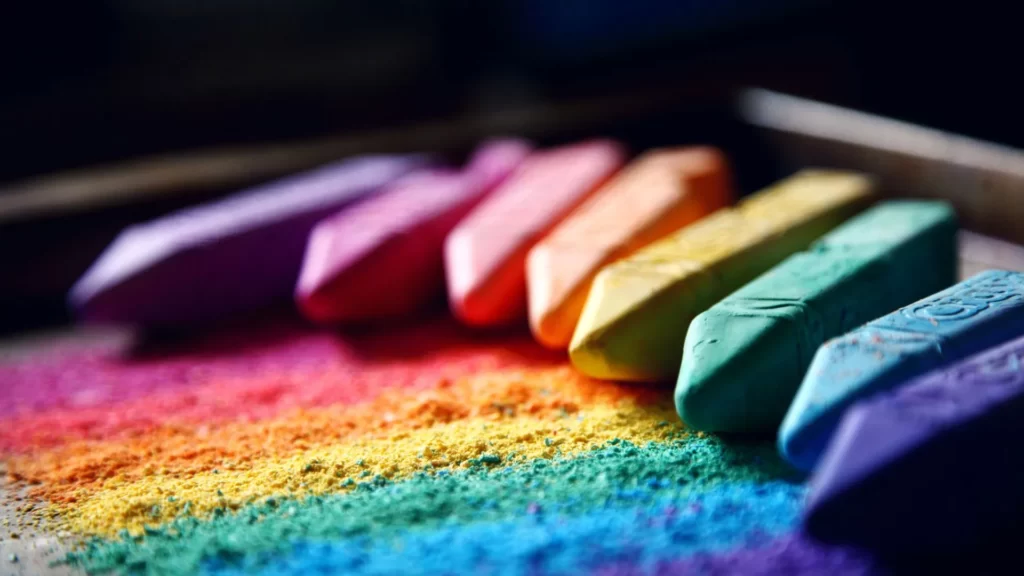Color Meanings
Colors have been used for centuries to convey various meanings and evoke different emotions. They can influence our moods, thoughts, and even physical reactions. Understanding the meaning of different colors can be helpful in many areas of life, from fashion and interior design to marketing and branding.
Each color has its own unique personality and can be associated with different emotions, traits, and characteristics. For example, red is often associated with passion, energy, and excitement, while blue is associated with calmness, trust, and stability. Yellow is associated with happiness, creativity, and optimism, while green is associated with growth, harmony, and balance.
In addition to their emotional and psychological meanings, colors can also have cultural and historical significance. For example, in some cultures, white is associated with purity and innocence, while in others, it is associated with mourning and death.
Understanding the meaning of different colors can also be helpful in personal expression and self-discovery. You may find that certain colors resonate with you more than others and that wearing or surrounding yourself with those colors can help you feel more aligned and connected to yourself.
In this article, we will explore the meanings and symbolism behind different colors, including their emotional, psychological, cultural, and historical significance. We’ll also tell you how they relate to crystals, spells, and more. Whether you are interested in fashion, interior design, healing, or personal development, understanding the meaning of different colors can be a valuable tool for enhancing your life and expressing yourself more fully.
The Meaning of Different Colors
It’s important to note that the meanings of colors can vary depending on cultural and personal associations, as well as the specific shade or tone of the color. You can find a more thorough guide about each color below the overview.
- Red: passion, energy, excitement, strength, love, danger, anger
- Orange: enthusiasm, creativity, warmth, playfulness, optimism
- Yellow: happiness, sunshine, hope, energy, intellect, caution
- Green: growth, harmony, balance, nature, peace, health, money
- Blue: calmness, trust, stability, serenity, wisdom, loyalty
- Purple: royalty, luxury, spirituality, creativity, mystery, magic
- Pink: love, romance, kindness, compassion, femininity
- Brown: stability, comfort, reliability, nature, earthiness
- Gray: neutrality, practicality, sophistication, balance
- Black: power, sophistication, mystery, elegance, death, negativity
- White: purity, innocence, cleanliness, simplicity, peace
- Gold: wealth, luxury, prosperity, success, abundance
- Silver: elegance, sophistication, grace, intuition, spirituality
How Colors Make Us Feel

Colors have been used for centuries to convey meaning and evoke emotions. They can be found in nature, art, and even in the way we dress. Each color has its own unique symbolism and meaning that can influence our emotions and behavior. Here are some common colors and what they represent:
Red
Red is a bold and passionate color that is often associated with love, excitement, and energy. It can also represent danger and anger. In some cultures, red is considered lucky and is worn during important events like weddings and festivals.
Orange
Orange is a warm and vibrant color that represents creativity, enthusiasm, and happiness. It is often associated with autumn and harvest and is commonly used in marketing to create a sense of urgency and excitement.
Yellow
Yellow is a bright and sunny color that represents optimism, happiness, and joy. It can also symbolize caution and cowardice. In some cultures, yellow is considered a sacred color and is often used in religious ceremonies.
Green
Green is a calming and soothing color that represents nature, growth, and harmony. It is often associated with fertility, abundance, and prosperity. In some cultures, green is also associated with jealousy and envy.
Blue
Blue is a cool and calming color that represents peace, serenity, and trust. It is often used in advertising to create a sense of reliability and professionalism. In some cultures, blue is also associated with sadness and depression.
Purple
Purple is a regal and luxurious color that represents creativity, spirituality, and wisdom. It is often associated with royalty, nobility, and power. In some cultures, purple is also associated with mourning and death.
Pink
Pink is a gentle and feminine color that represents love, romance, and sweetness. It is often used in advertising to appeal to women and is associated with breast cancer awareness.
Black
Black is a powerful and sophisticated color that represents elegance, mystery, and authority. It is often associated with mourning and is used in formal wear and business attire. In some cultures, black is also associated with evil and death.
White
White is a pure and innocent color that represents cleanliness, clarity, and simplicity. It is often associated with weddings, hospitals, and religious ceremonies. In some cultures, white is also associated with mourning and death.
In conclusion, colors have a powerful impact on our emotions and behavior. Understanding the symbolism and meanings behind different colors can help us better communicate and express ourselves. Whether we are choosing a color to wear, decorating our homes, or creating a marketing campaign, color plays an important role in how we perceive and interact with the world around us.
How Different Colors Affect Our Mind
Color is a powerful tool that can evoke emotions, convey meaning, and influence behavior. The psychology of color has been studied for years, and researchers have found that different colors can elicit different psychological responses. Here are some of the common psychological responses that humans have to different colors:
Red
Red is a color that elicits a strong emotional response. It is often associated with passion, love, and excitement, but it can also be associated with danger and anger. Research has found that exposure to the color red can increase heart rate and stimulate the senses.
Orange
Orange is a warm and inviting color that can elicit feelings of happiness and enthusiasm. It is often used in marketing to create a sense of urgency and excitement. Research has found that exposure to the color orange can increase energy levels and stimulate the appetite.
Yellow
Yellow is a bright and sunny color that can elicit feelings of optimism and happiness. It is often used in advertising to create a sense of positivity and cheerfulness. Research has found that exposure to the color yellow can increase mental agility and stimulate the nervous system.
Green
Green is a calming and soothing color that can elicit feelings of relaxation and harmony. It is often associated with nature and can be used to create a sense of balance and stability. Research has found that exposure to the color green can improve concentration and reduce stress.
Blue
Blue is a cool and calming color that can elicit feelings of tranquility and trust. It is often associated with water and can be used to create a sense of cleanliness and purity. Research has found that exposure to the color blue can reduce anxiety and promote feelings of calmness.
Purple
Purple is a regal and luxurious color that can elicit feelings of creativity and spirituality. It is often associated with royalty and can be used to create a sense of sophistication and elegance. Research has found that exposure to the color purple can stimulate the imagination and promote problem-solving skills.
Pink
Pink is a gentle and feminine color that can elicit feelings of love and nurturing. It is often used in advertising to appeal to women and can be used to create a sense of innocence and sweetness. Research has found that exposure to the color pink can reduce feelings of anger and aggression.
Black
Black is a powerful and sophisticated color that can elicit feelings of mystery and elegance. It is often associated with formal wear and can be used to create a sense of authority and professionalism. Research has found that exposure to the color black can promote feelings of power and confidence.
White
White is a pure and innocent color that can elicit feelings of clarity and simplicity. It is often associated with weddings and can be used to create a sense of cleanliness and purity. Research has found that exposure to the color white can promote feelings of purity and peace.
The psychology of color is a complex and fascinating subject. Different colors can elicit different psychological responses, and understanding these responses can help us better communicate and express ourselves. Whether we are choosing a color to wear, decorating our homes, or creating a marketing campaign, color plays an important role in how we perceive and interact with the world around us.
The Cultural Significance of Different Colors
Colors have played a significant role in cultural traditions and symbolism throughout history. Different colors hold different meanings and significance in different cultures, and understanding these meanings can provide insight into cultural values and beliefs. Here are some examples of the cultural significance of different colors:
Red
In many cultures, red is associated with passion, love, and luck. In Chinese culture, red is considered a lucky color and is often used in celebrations such as weddings and Chinese New Year. In Indian culture, red is associated with marriage and fertility. In Western culture, red is often associated with danger and warning signs.
Yellow
In many Eastern cultures, yellow is associated with wisdom, royalty, and power. In China, the Emperor’s robes were traditionally yellow. In Japan, yellow was once reserved for royalty. In Western cultures, yellow can be associated with cowardice or caution.
Green
In many cultures, green is associated with nature, growth, and fertility. In Islamic culture, green is considered a holy color and is often used in mosque decoration. In Ireland, green is associated with St. Patrick’s Day and the country’s lush landscape. In Western cultures, green is also associated with money and envy.
Blue
In many cultures, blue is associated with calmness, loyalty, and spirituality. In Hinduism, blue is associated with the god Vishnu. In Western cultures, blue is often associated with sadness or melancholy.
Purple
In many cultures, purple is associated with royalty, luxury, and spirituality. In Ancient Rome, purple was reserved for the Emperor and high-ranking officials. In Western cultures, purple is also associated with mourning.
Black
In many cultures, black is associated with death, mourning, and evil. In some African cultures, black is associated with fertility and masculinity. In Western cultures, black is often associated with formality and sophistication.
White
In many cultures, white is associated with purity, innocence, and peace. In Hinduism, white is worn for funerals and mourning. In some African cultures, white is associated with spiritual purity. In Western cultures, white is often associated with weddings and new beginnings.
Gold
In many cultures, gold is associated with wealth, prosperity, and divinity. In Ancient Egypt, gold was considered the skin of the gods. In Western cultures, gold is often associated with luxury and success.
Silver
In many cultures, silver is associated with purity, clarity, and reflection. In ancient Chinese culture, silver was associated with the moon and yin energy. In Western cultures, silver is often associated with elegance and sophistication.
Colors have significant cultural and symbolic meanings in different cultures. Understanding these meanings can provide insight into cultural values and beliefs. Whether it’s in art, fashion, or everyday life, colors play an important role in how we perceive and interact with the world around us.
The Historical Significance of Different Colors

Colors have played a significant role in human history. From ancient civilizations to modern times, different colors have been used for a variety of purposes, from decoration and fashion to religious and political symbolism. Here are some examples of the historical significance of different colors:
Red
In ancient Egypt, red was associated with life and victory, and was often used in religious and political ceremonies. In ancient Rome, red was associated with power and authority and was often used in military uniforms and flags. In medieval Europe, red was associated with passion and love and was often used in heraldry and coat of arms.
Yellow
In ancient China, yellow was associated with the Emperor and was reserved for the royal family. Yellow robes were worn by the Emperor and his officials and were considered a symbol of power and authority. In medieval Europe, yellow was associated with cowardice and treachery and was often used to mark traitors and criminals.
Green
In ancient Egypt, green was associated with rebirth and regeneration, and was often used in funerary art and decoration. In medieval Europe, green was associated with fertility and rebirth, and was often used in religious art and decoration. In Islamic culture, green was considered a holy color and was often used in mosque decoration.
Blue
In ancient Egypt, blue was associated with the sky and water, and was often used in religious art and decoration. In ancient Greece, blue was associated with the gods and was often used in pottery and sculpture. In medieval Europe, blue was associated with the Virgin Mary and was often used in religious art and decoration.
Purple
In ancient Rome, purple was associated with royalty and was reserved for the Emperor and high-ranking officials. Purple dye was very expensive and was often used to demonstrate wealth and power. In medieval Europe, purple was associated with royalty and was often used in religious art and decoration.
Black
In ancient Egypt, black was associated with death and the afterlife, and was often used in funerary art and decoration. In medieval Europe, black was associated with mourning and was often worn by widows and mourners. In the 20th century, black became associated with rebellion and counterculture, and was often used in fashion and music.
White
In ancient Greece and Rome, white was associated with purity and innocence and was often used in religious art and decoration. In medieval Europe, white was associated with weddings and was often worn by brides. In modern times, white has become associated with simplicity and minimalism and is often used in design and fashion.
Gold
In ancient Egypt, gold was associated with the gods and was often used in religious art and decoration. Gold was also used for jewelry, coins, and other luxury items. In medieval Europe, gold was associated with wealth and prosperity, and was often used in religious art and decoration.
Silver
In ancient Rome, silver was associated with the moon and was often used in jewelry and decoration. In medieval Europe, silver was associated with purity and was often used in religious art and decoration.
In conclusion, colors have played a significant role in human history. Different colors have been used for a variety of purposes, from decoration and fashion to religious and political symbolism. Understanding the historical significance of different colors can provide insight into the cultural values and beliefs of different civilizations and time periods.

